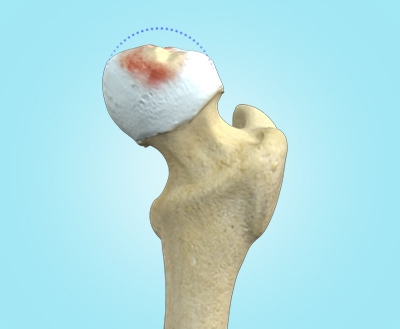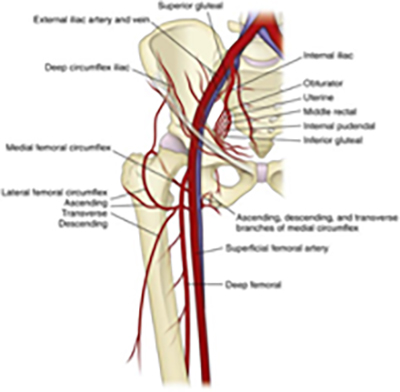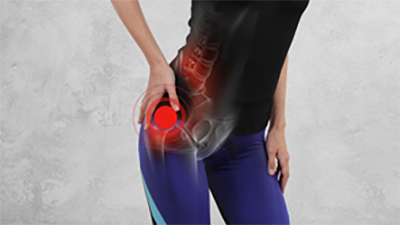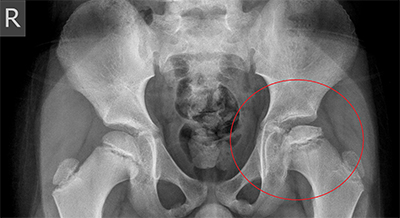Perthes Disease

What is Perthes Disease?
Perthes disease, also known as Legg-Calve-Perthes disease, is a condition characterized by faulty development of the femoral head and acetabulum in children ages 3 to 12 years old. This condition is four to five times more likely to be seen in boys than girls. The degeneration is caused by disruption in blood flow to the femur that leads to abnormal growth and shape of the femoral head. If untreated, the abnormally developing hip joint is prone to early onset arthritis, severe pain, and dysfunction. A definitive cause for Perthes disease has not been identified yet, but it is believed that trauma, circulatory conditions, and genetics play a role in development of the disease.

Causes of Perthes Disease
Perthes disease is caused by inadequate circulation to the bony matrices of the femoral head. Perthes disease occurs in children and leads to faulty development of the femoral head and a handful of problems for the hip joint. Among these problems are early onset arthritis, further deformities in the hip, and chronic pain. Perthes disease can coexist with other painful conditions:
- Femoroacetabular impingement
- Groin muscle tear
- Ischiofemoral impingement
- Labral tears
- Hip flexor tendonitis

Symptoms of Perthes Disease
Symptoms of Perthes disease can vary, and can include:
- Pain in the groin
- Stiffness and reduced range of motion
- Pain when putting additional weight on the injured leg
- Limping that increases in frequency over time
- Aggravation after activity

Diagnosis of Perthes Disease
As pain in the hip joint can have several causes, diagnosing Perthes disease requires a handful of tests to be diagnosed. Your doctor will carefully review the presentation of symptoms, imaging, and perform a physical examination. Diagnostic tests for Perthes disease include:
- MRI Scan: This study uses a large magnetic field and radio waves to produce images that help in detecting damage to soft tissue, muscles, tendons, and ligaments located in the hip.
- CT Scan: This scan uses multiple X-rays to produce detailed cross-section images of soft tissues, bone, and cartilage structures.
- X-rays: This study uses electromagnetic beams to identify the presence of stress fractures or bony deformities.
- Ultrasound: This study uses high-frequency sound waves to produce images of the tissues.
- Bone scan: This technique uses a radioactive substance to detect any damage or pathology associated with the bony matrices composing the hip.
Treatment for Perthes Disease
Treatment for Perthes disease varies based on age, health, type of damage, and stage of the disease. If the disease has not progressed significantly, the doctor will initially recommend conservative treatment to help relieve the symptoms. This may be sufficient for mild cases of Perthes syndrome

Conservative treatments
- Anti-inflammatory medication: Your doctor may recommend non-steroidal anti-inflammatory drugs (NSAIDs) to reduce pain.
- Rest and Activity Modification: To allow bone to grow correctly, the patient may be instructed to limit activities and be provided means to restrict weight bearing.
- Physical therapy: To ensure the patient is moving their hip correctly, physical therapy can be prescribed to address muscle imbalances and strengthen the lateral leg muscles.

Surgical treatment
If symptoms progress or do not improve with conservative treatment, surgical methods can be used to halt the progression of Perthes disease. Below are possible surgical interventions for Perthes disease:
- Trochanteric flip osteotomy
- Periacetabular osteotomy
- Arthroscopic procedures
- Cartilage transplants
- Robotic hip replacement
Rehabilitation following surgery may be 6 to 12 months in length depending on the procedures performed.
References
- Terjesen T, Wiig O, Svenningsen S. The natural history of Perthes' disease. Acta Orthop. 2010 Dec;81(6):708-14. doi: 10.3109/17453674.2010.533935. Epub 2010 Nov 11. PMID: 21067434; PMCID: PMC3216081.
